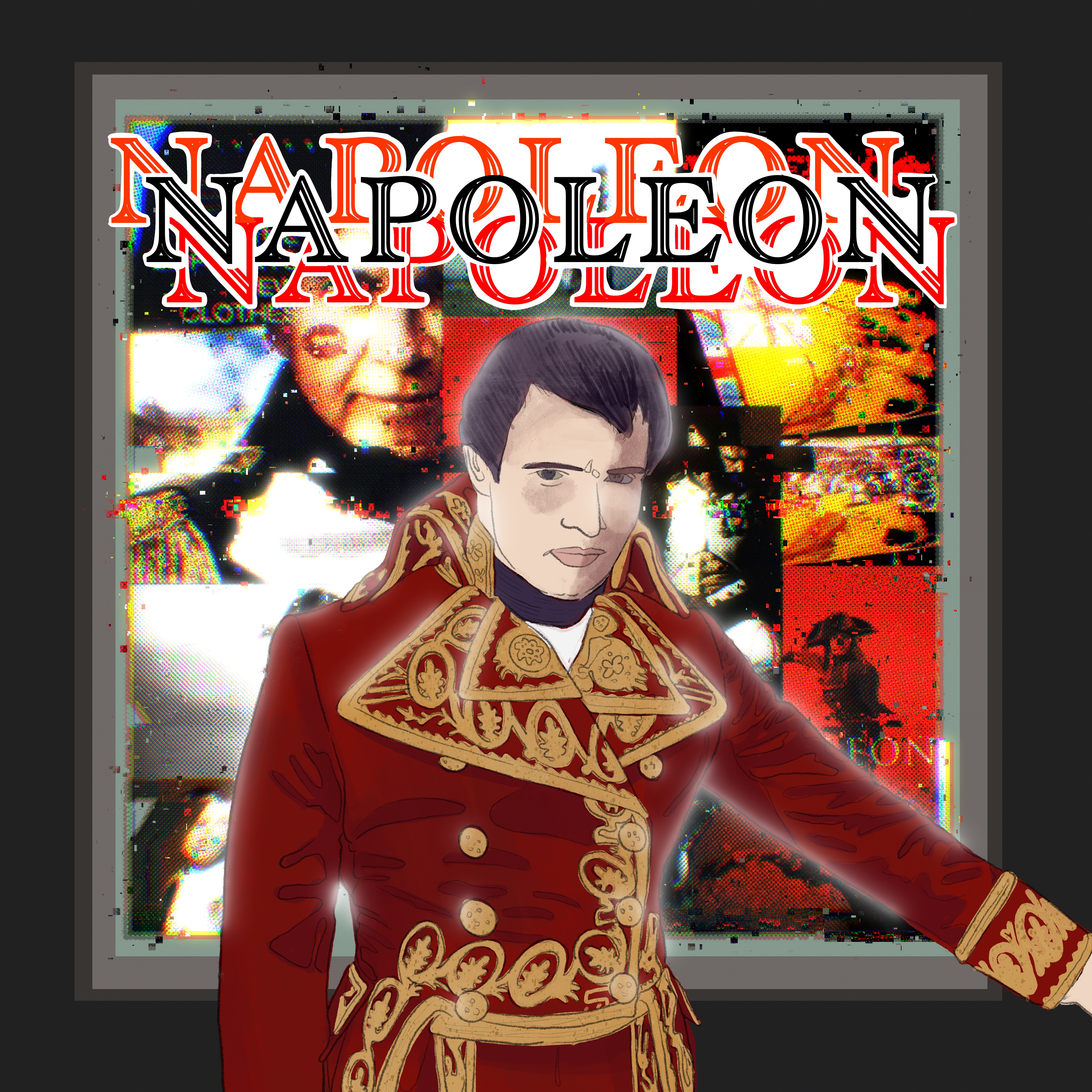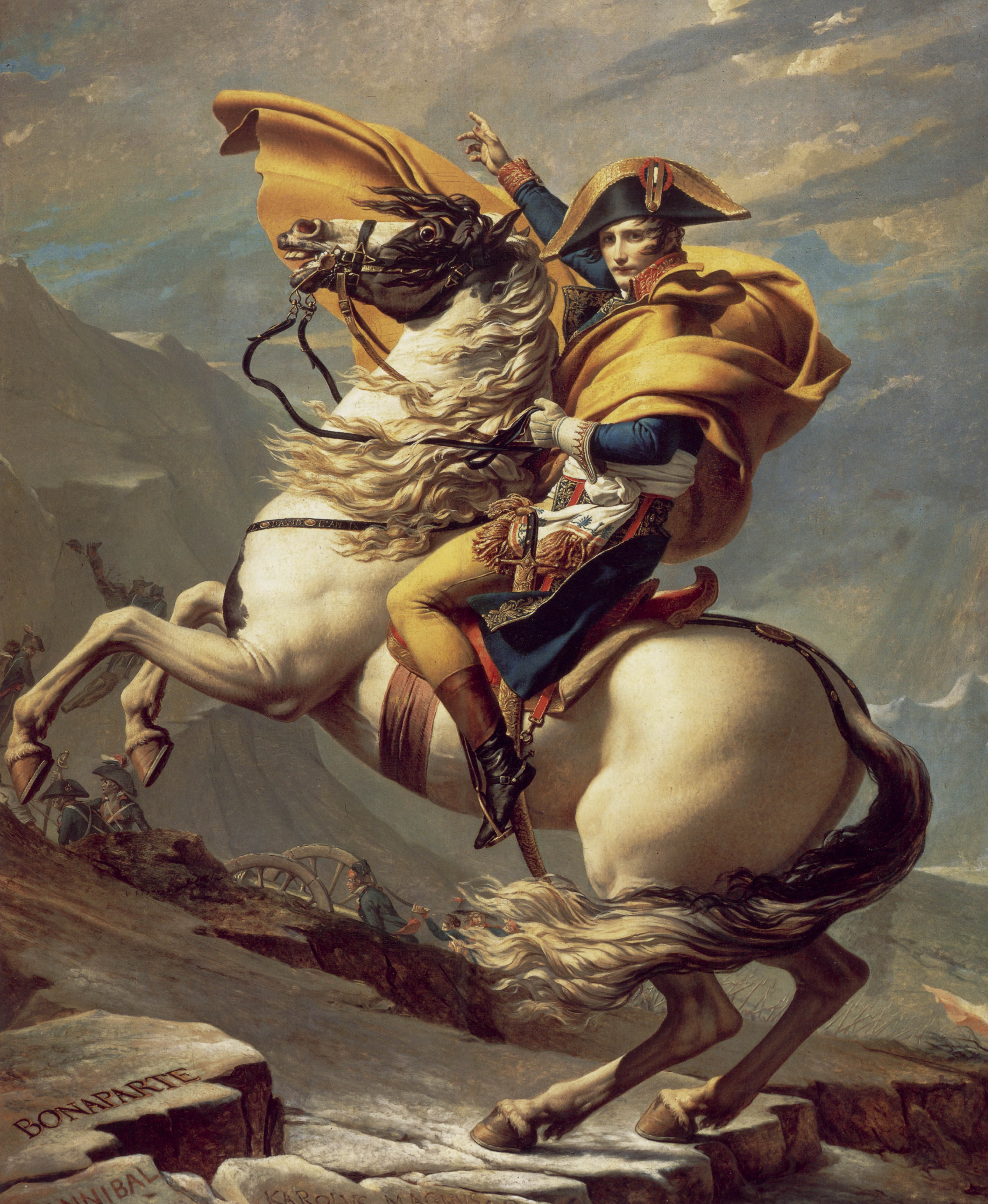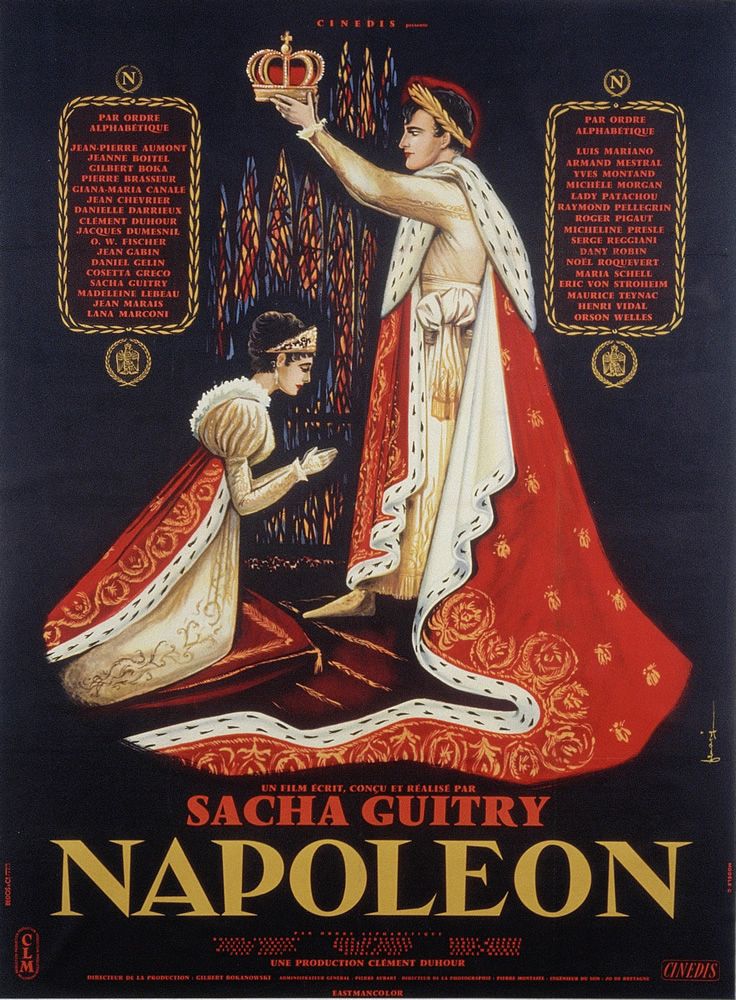Please visit response.fsu.edu for official FSU updates and resources.
Napoleon: The Man Who Crafted His Own Myth
 The image of Napoleon seems to have permeated our culture. Even if you haven't studied European history or ever been to France, you probably still have an idea of what he looks like or who he is. Ever stop and wonder, why? Why does the image of Napoleon seem so common? Why does he crop up in pop culture, time and time again? It might have something to do with how carefully Napoleon created his own image and myth through widely disseminated propaganda during his reign.
The image of Napoleon seems to have permeated our culture. Even if you haven't studied European history or ever been to France, you probably still have an idea of what he looks like or who he is. Ever stop and wonder, why? Why does the image of Napoleon seem so common? Why does he crop up in pop culture, time and time again? It might have something to do with how carefully Napoleon created his own image and myth through widely disseminated propaganda during his reign.
Napoleon was a man who tried to aggrandize himself and portray himself as larger than life (no height joke intended). He came into power first as a consul and then a few years later, he would crown himself as emperor shortly following the French Revolution. Due to this unstable political climate where power was largely up for grabs, he feared losing his power and turned to using art as a way to avoid this. He employed multiple artists to make art that was largely propagandistic in nature. Art created under the Napoleon regime did many things, like puffing up the empire and its achievements while also showing Napoleon as a generous and strong leader. Perhaps one of the most famous examples of this would be the very early 19th century painting, Napoleon Crossing the Alps, by French painter, Jacques-Louis David.
 We can gather from what we know that Napoleon was a very image conscious person and due to that, he leaned heavily on fashioning himself in a way similar to previous monarchs or even Roman emperors. One way of doing this was to have himself painted in the neoclassical style, which was a very popular style during his reign and was also a historically accepted style for regimes that helped add legitimacy to one's power. Whether this painting is a faithful recreation of the event that occurred is not relevant. What is relevant is how it looks and what it conveys because it is sculpting the story that he wants to be told, even if it may not be 100% the truth. In this work, Napoleon is shown as a brave leader who is valiantly leading his troops to victory over the rugged terrain of the Alps. In fact, Napoleon specifically requested an equestrian portrait so he could be seen as the calm leader upon a chaotic horse. To further the influence of these images, Napoleon would have copies of them made and sent to other towns and cities. Perhaps this wide dissemination of these images explains why the image of napoleon is so prevalent and well-remembered in cultural consciousness. We can see more examples of this popularity in the art on display at the “Napoleon at the Movies” exhibit put on by the Florida State University Museum of Fine Arts (MoFA). For instance, the poster art for Sacha Guitry’s 1955 film, Napoleon, bears more than just a passing resemblance to the 1805-1807 painting, The Coronation of Napoleon, that Jacques-Louis David painted following Napoleon's coronation as emperor of France. In many ways, it is almost a less detailed replica of the original work.
We can gather from what we know that Napoleon was a very image conscious person and due to that, he leaned heavily on fashioning himself in a way similar to previous monarchs or even Roman emperors. One way of doing this was to have himself painted in the neoclassical style, which was a very popular style during his reign and was also a historically accepted style for regimes that helped add legitimacy to one's power. Whether this painting is a faithful recreation of the event that occurred is not relevant. What is relevant is how it looks and what it conveys because it is sculpting the story that he wants to be told, even if it may not be 100% the truth. In this work, Napoleon is shown as a brave leader who is valiantly leading his troops to victory over the rugged terrain of the Alps. In fact, Napoleon specifically requested an equestrian portrait so he could be seen as the calm leader upon a chaotic horse. To further the influence of these images, Napoleon would have copies of them made and sent to other towns and cities. Perhaps this wide dissemination of these images explains why the image of napoleon is so prevalent and well-remembered in cultural consciousness. We can see more examples of this popularity in the art on display at the “Napoleon at the Movies” exhibit put on by the Florida State University Museum of Fine Arts (MoFA). For instance, the poster art for Sacha Guitry’s 1955 film, Napoleon, bears more than just a passing resemblance to the 1805-1807 painting, The Coronation of Napoleon, that Jacques-Louis David painted following Napoleon's coronation as emperor of France. In many ways, it is almost a less detailed replica of the original work.


The exhibit's introduction theorizes as to why there are so many movies made about Napoleon as opposed to any other historical figure, with this explanation: “Napoleon’s story arc is epic in scope and dramatic opportunity. It is a narrative that spans his idealistic youth as a Corsican nationalist and revolutionary in the French army to the height of his power as an ambitious emperor to his eventual ego-fueled downfall. These plot points are punctuated by shifting love interests and awe-inducing battlefield set pieces.”(Florida State University Museum of Fine Arts, 2021)
Since none of us personally lived through Napoleon’s regime and it's no longer possible to talk to anyone who was, all we have to tell us about this time is the writing and artwork that was left behind. This could explain why this particular perception and image of Napoleon continues to last and be referenced in film and pop culture. Not to mention that the increased censorship of the arts during his reign probably has a lot to do with the way his idealized image of himself has lasted through the centuries. Napoleon was big on using art to self-aggrandize and glorify his empire and aspirations. One could say he was successful, as these paintings and others works of art have outlived him and defined his legacy for so long, to the point where many of us may not know much about the real man behind the myth. As a man who put such attention into crafting his own myth, maybe this is exactly what he wanted. We still have these depictions of him hundreds of years after he would fall from power, which truly shows the eternal impact that art can have on an audience.
The “Napoleon at the Movies” exhibit will be available at MoFA from August 23 - October 30, 2021. It features more than forty movie posters from sixteen different countries, as well as a collection of rare books and materials from FSU Libraries’ French Revolution & Napoleon Collections to aid in exploring the history of self-fashioning and myth-making that surrounds Napoleon.
In conjunction with this exhibit, the SLC will be screening The Emperor’s New Clothes on 10/28 at 7 pm.
https://mofa.fsu.edu/napoleon-at-the-movies/
Written by: Victoria Weaver
Art by: Mikael Byrd



